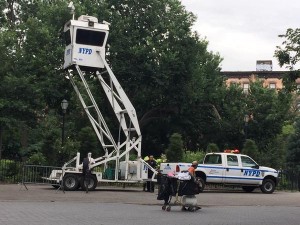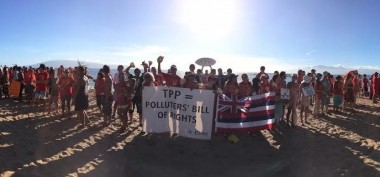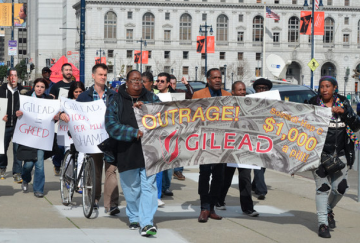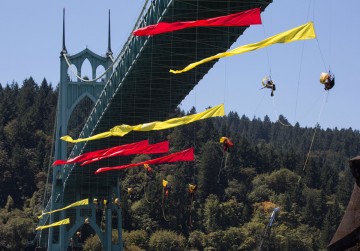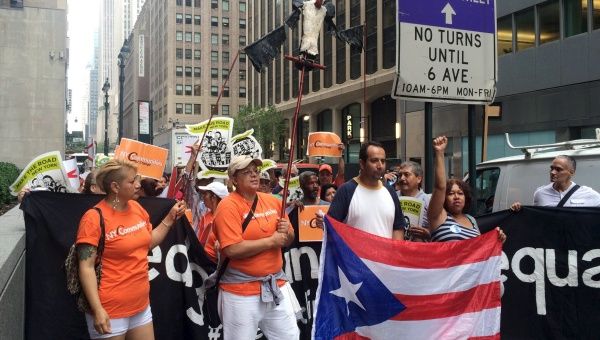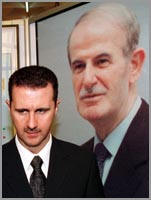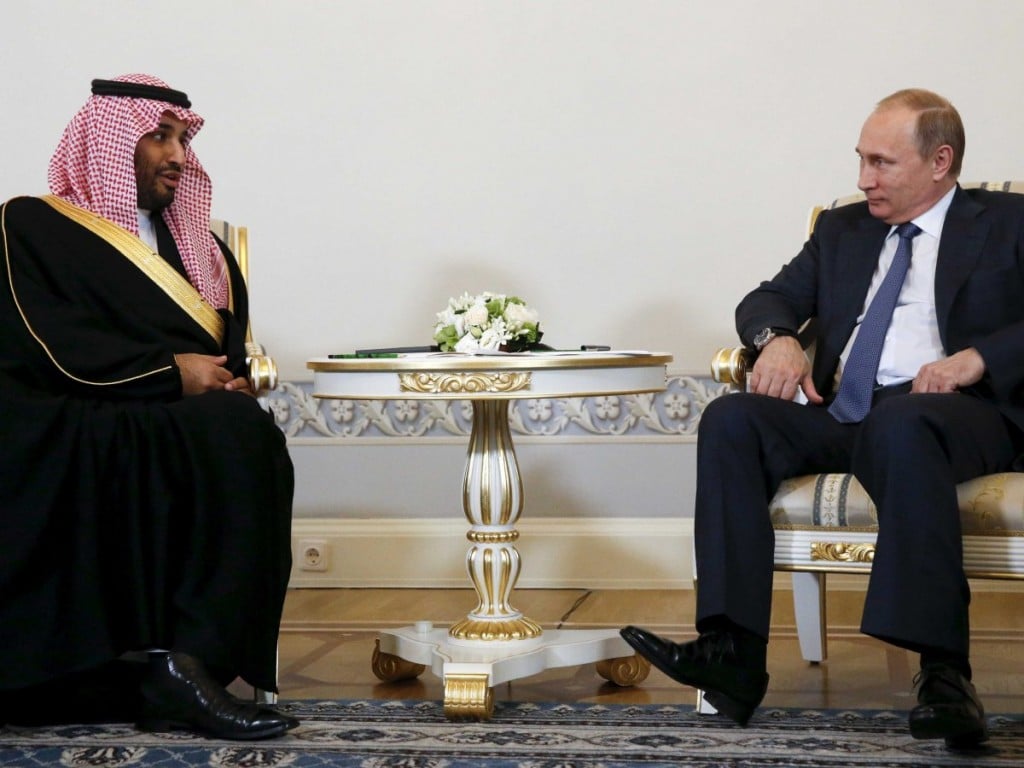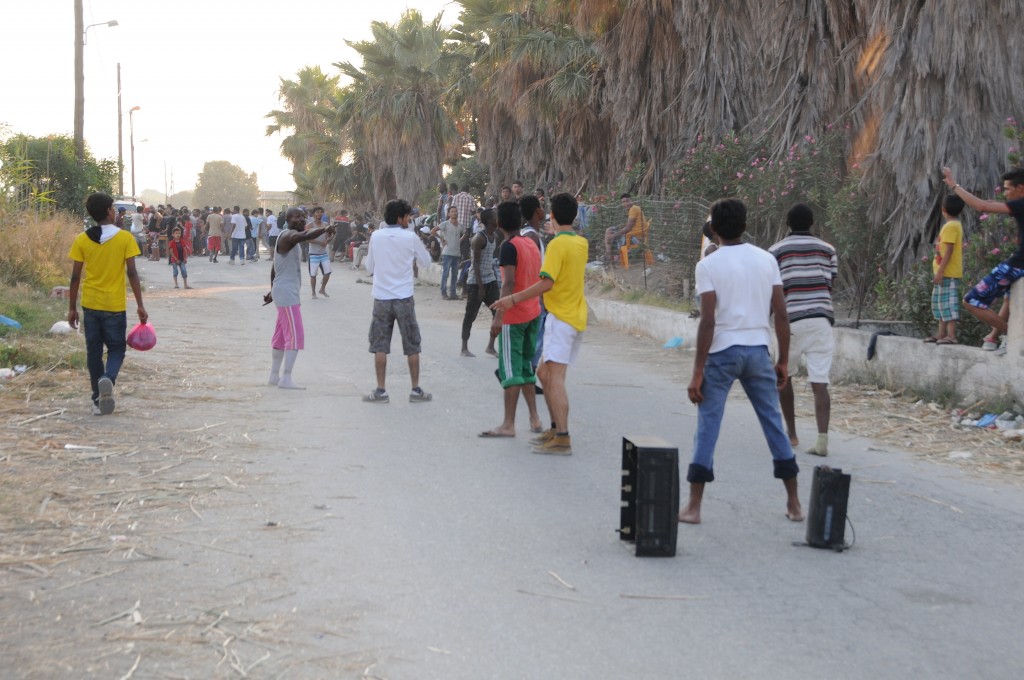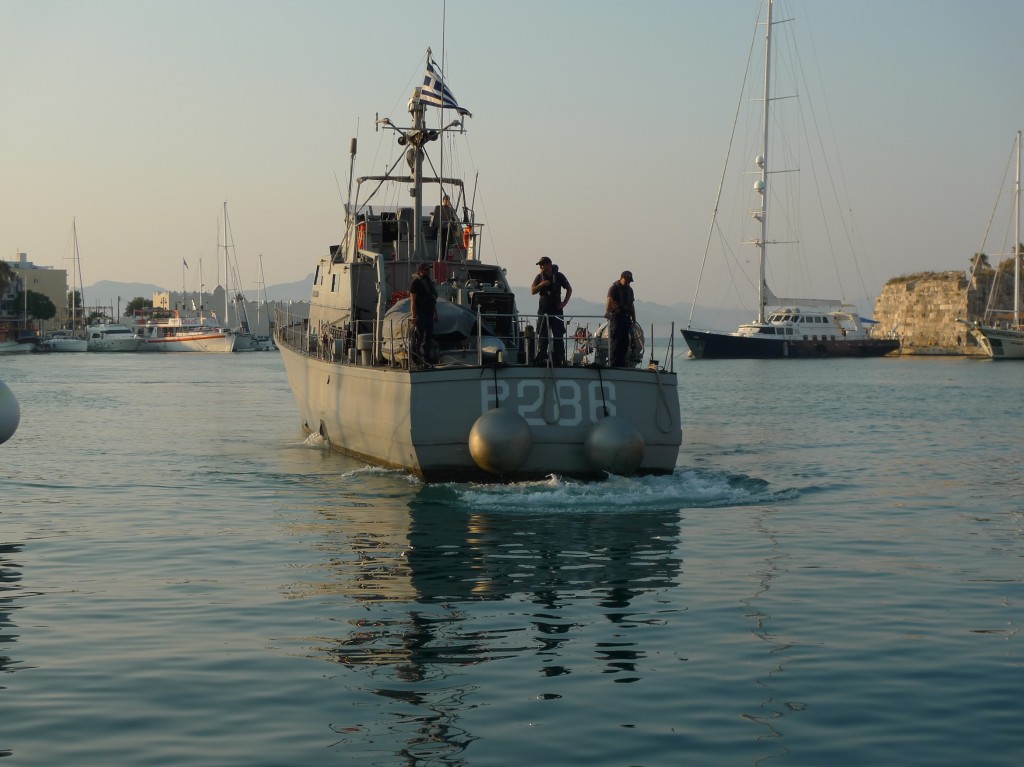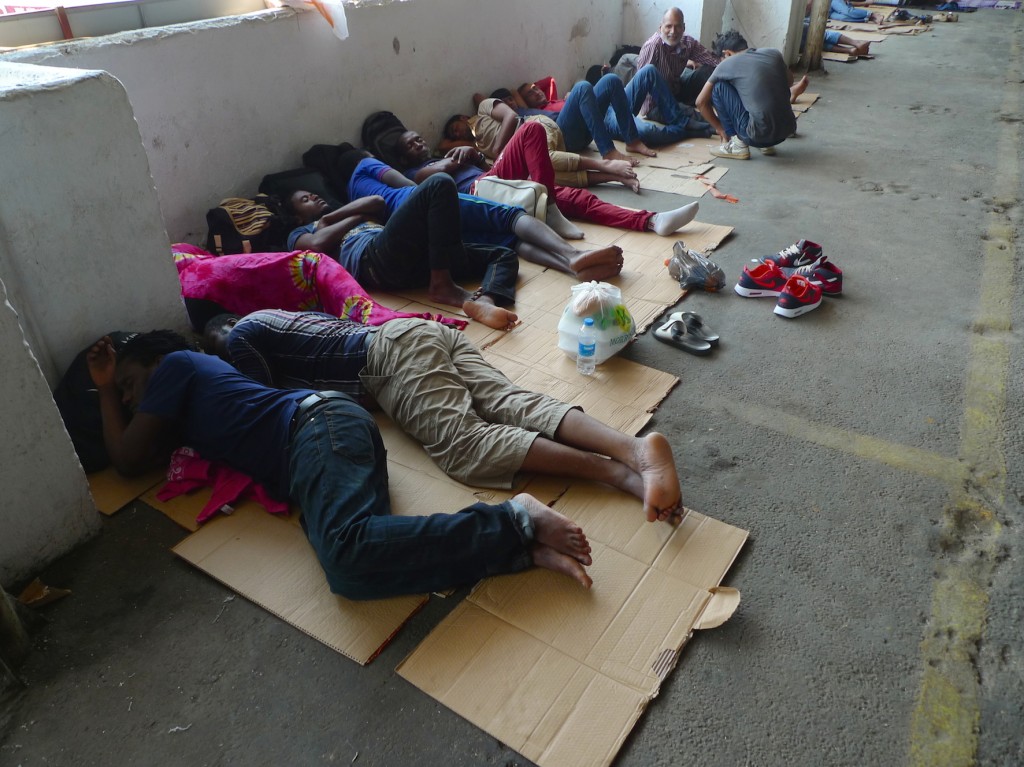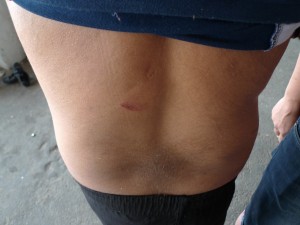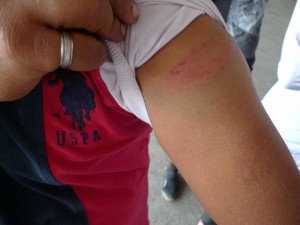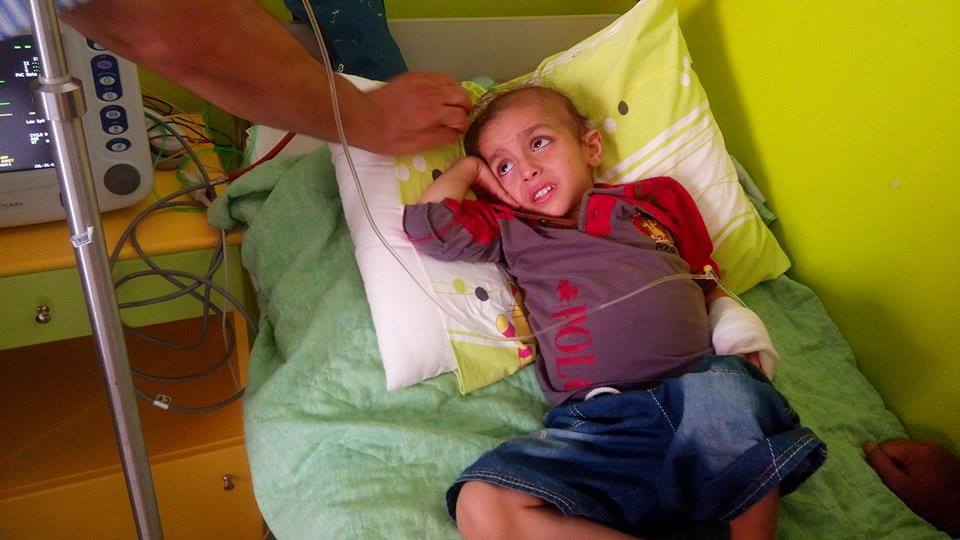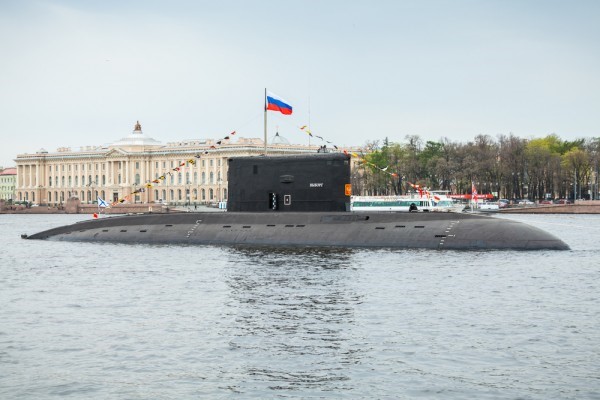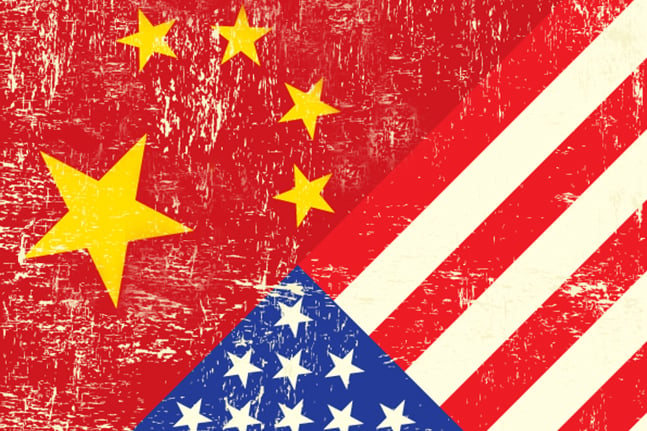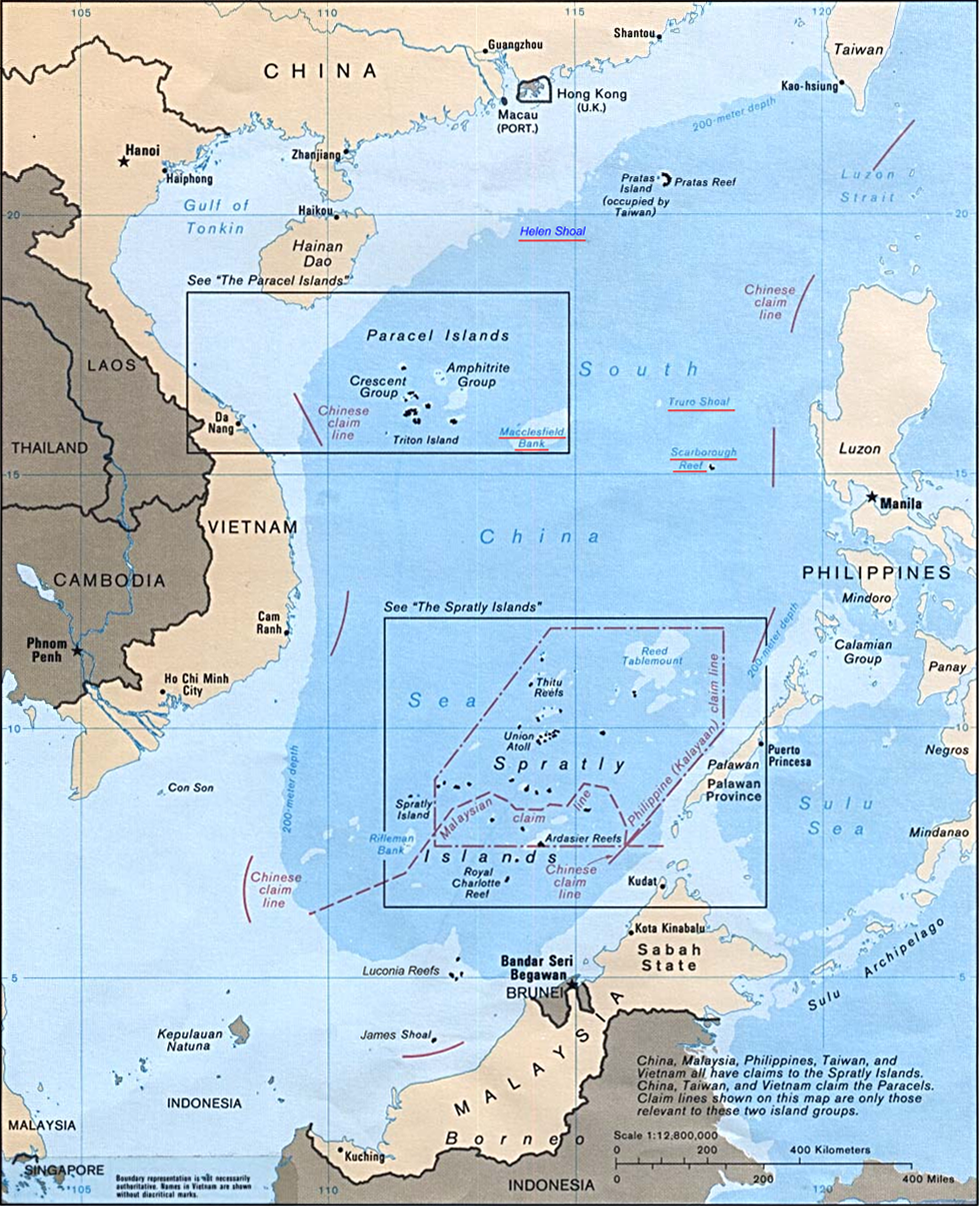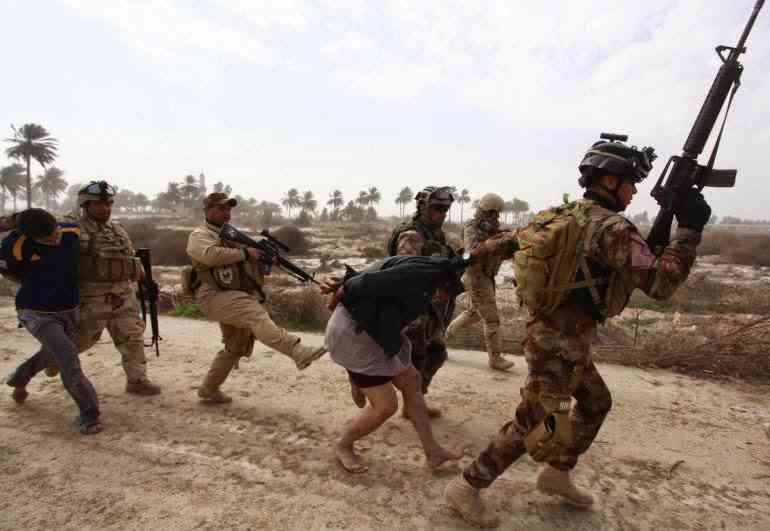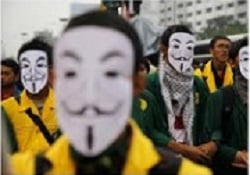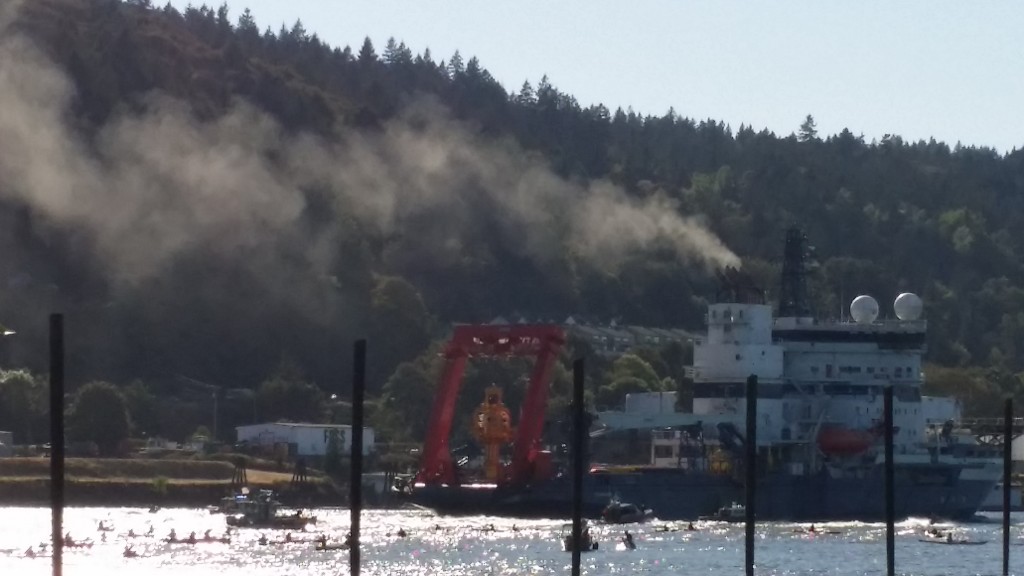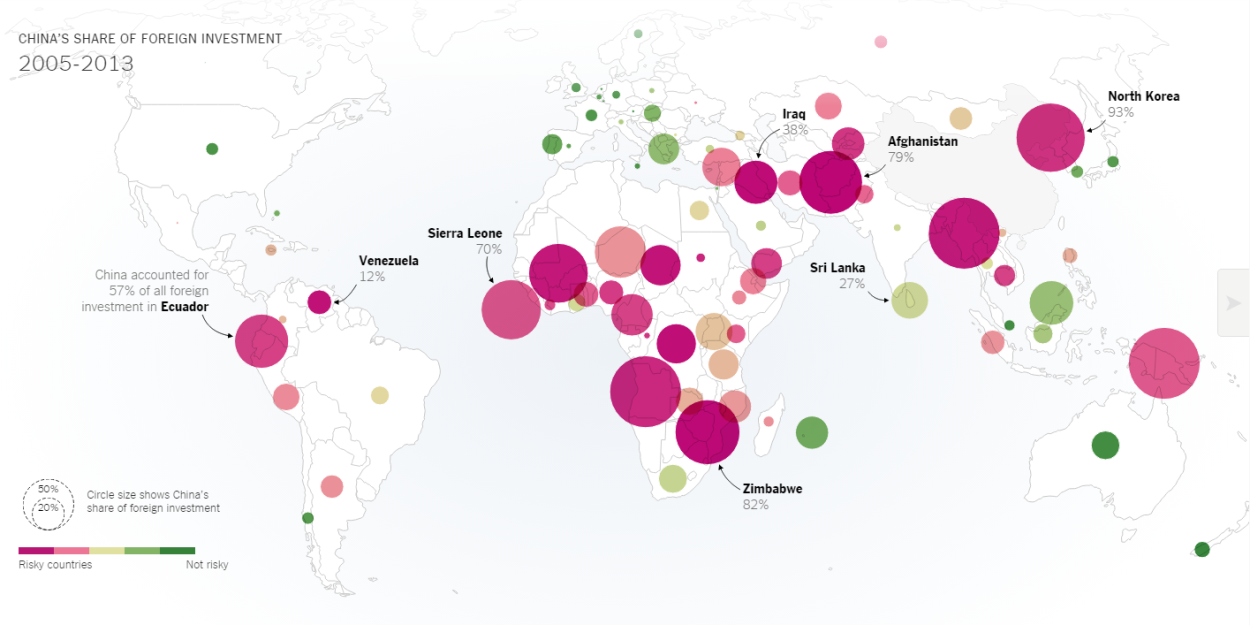Excerpted from Free Radicals: War Resisters in Prison by CJ Hinke, forthcoming from Trine-Day in 2016.
The lines of resistance to war take many forms as these stories of resisters in prison in World Wars I (“the Great War”, “the war to end all wars”) and II (‘the good war”), the Cold War, the undeclared Korean “conflict”, the ‘Red Scare’ of the McCarthy period, the 1960s and, finally, the US war against Vietnam, demonstrate. There are as many reasons and methods to refuse war as there are refusers. The Department of Justice classified WWII resisters as religious, moral, economic, political, neurotic, naturalistic, professional pacifist, philosophical, sociological, internationalist, personal and Jehovah’s Witness.
Why are some awake and aware, why do some feel their conscience so strongly they cannot ignore it? As A.J. Muste proclaimed, “If I can’t love Hitler, I can’t love at all.” Why isn’t that spirit inside all of us? Most of us have unconsciously shut up the voice of our troublesome conscience to make our lives easier. I assure you, however, the world would be immeasurably better if we all learned to listen to even its faintest of stirrings.
The reason The Resistance was so effective against the draft is that meetings listened to everybody. This stratagem was learned in vivo from Quakers, SNCC, and CNVA. The Resistance functioned because of its underlying commitment to principled consensus. Many of us—(does not play well with others)—went ahead to devise our own actions out of frustration with this long and often tedious performance. Sometimes others joined us seeing its value and sometimes they did not. If there were “leaders” of The Resistance, I never met any!
Consensus is not easy but it works. Consensus is a process rather than a conclusion. Consensus never succeeds by filibuster. Consensus works in precisely the way that majority rule and voting never do. Voting ends up with a large disaffected, unsatisfied group of constituents. Do you really want to vote for some second-best, had-to-run, mealy-mouthed, forked-tongue liar anyway?!?
Consensus is experiential. Voting is adversarial. Consensus builds community. Voting makes enemies, creates outsiders. So just listen already.
There are a hell of a pile-up of people on this planet and I may just be too idealistic. But in an ideal society, we would all be making decisions through participatory democracy rather than the essential disenfranchisement that is at the core of majority voting.
Among other tactics, the Resistance proposed employing the ancient Judæo-Christian and Mediæval law concept of sanctuary—a place of safety, a refuge— to military deserters and draft resisters under indictment. One of the first to open its doors for sanctuary was the Washington Square Methodist Church, home to the Greenwich Village Peace Center.
More than 500 churches coast to coast, including Lutherans, United Church of Christ, Roman Catholics, Presbyterians, Methodists, Baptists, Jewish, Unitarian Universalists, Quakers, Mennonites, and some universities, also declared themselves safe havens. Arresting war resisters in a sanctuary was a chilling image.
Another tactic which provided us great inspiration was the destruction of draft board files to make the induction of soldiers impossible. This was followed by the destruction of corporate records for major war profiteers such as Dow Chemical, producers of napalm, and General Electric, producer of bomb components. Remember, if you can, this was decades before computerization; without those files, meat could not be fed into the maw of the war machine.
Staughton Lynd documents at least 15 actions against draft boards and war corporations from 1966-1970 resulting in the destruction of from a few hundred to more than 100,000 records. In 1969 the Women Against Daddy Warbucks not only destroyed draft files but removed all the ‘1’ and ‘A’ keys from New York draft board office typewriters so draftees could not be declared fit for duty.
Jerry Elmer, Esq., a year my junior to refuse to register, may hold the record for this tactic. He burglarized 14 draft boards in three cities! Jerry became Harvard Law School’s only convicted felon in the class of 1990.
The Internet offers a vast new world of opportunities for nonviolent activists, including networking with others for action in the real world. The practice of evil now requires computers and we can easily interrupt the processes of evil and greed. You can fuck up the system without ever leaving the couch.
Since 2010, American boots were on the ground in military incursions into Pakistan, Afghanistan, Iraq, Libya, Jordan, Turkey, Yemen, Somalia, Uganda, Chad, the Central African Republic, Sudan, and Mali. Threats to US national security were the reasons given. Be afraid. Be very afraid. Our “commander-in-chief” tells us America has “the greatest army the world has ever known”—and that’s a good thing?!?
In 2015, the United States will spend 741 billion dollars a year on its current military misadventures — $59,000 a minute — four and a half times its nearest competitor, China. No other country comes close. This figure, however, fails to include the the debt for past war spending. In all, 54% of the US budget is spent in war, 4.4% of our Gross Domestic Product, 73 cents of every US dollar. America’s military is a parasite.
That’s a trillion and a half dollars in total. Think of all the good in the world that inconceivable amount of money could do. We’d rather slaughter around the globe and decimate other countries. To put this in perspective, it would cost less than 1/10 of the U.S. military budget, $62.6 billion, to provide every American tertiary education for free!
If one examines history, it is easy to be overwhelmed because history is primarily the history of war. Although 619 million human beings have been slaughtered, there is not a war in humankind’s long history which would not have been “won” by attrition sooner rather than later.
Can anyone think black slaves would not have been freed and attained at least the level of “equality” seen in the 21st century if young American brothers and neighbors had not massacred each other in America’s bloodiest war of all time, the US Civil War?
Can anyone think Germany’s imperialist Nazi regime would not have collapsed on its own? Which course generates more suffering, waiting or slaughter?
Although the U.S. Constitution requires Congress to declare war, as does, more recently, the 1973 War Powers Resolution, it has not done so since World War II. Thus, the unilateral military incursions made by the U.S. military into Korea; Vietnam; Laos; Cambodia; Grenada; Panama; Iraq and Kuwait (“Desert Storm”); Afghanistan (“Enduring Freedom”); Iraq (“Iraqi Freedom”) were clearly illegal wars. U.S. wars on terror are really nothing more than wars of terror. They come at a terrible human cost, of course, but also are costing Americans $14 million an hour. Of course, I have only touched on the high points—there are dozens more minor military actions in sovereign nations. They call these military theaters, where real people die onstage.
As Noam Chomsky states, “If the Nuremberg laws were applied, then every post-war American president would have been hanged.”
Perhaps I should not be so hard on the United States but, after all, its my country. In all six millennia of recorded human history, that human history records a grand total of merely 300 years of peace! But, of course, that doesn’t make war right…
The U.S. Constitution created a fine system for control of government powers, checks and balances from government’s three branches. However, the U.S. Government has spiraled out of control unchecked and unbalanced. The U.S.A. has existed for more than 235 years; in all that time, we have only seen 16 years of peace! Nearly every one of America’s wars have been wars of aggression and against self-determination deemed not in America’s national interest.
Schools, wedding parties, and funeral processions are our specialties. Remember “pacification”? We are a nation with at least three separate kill-lists for “targeted” assassinations decided on “Terror Tuesdays”. Is this your America? U.S. soldiers are not only terrorists to ordinary citizens but murderers without sanction. The acid test for war is to imagine its reverse, war happening to us, at home.
Tell me, please, which are the “good” wars? Neither politicians nor their sons are often soldiers. How long would a war last if all the 80-year old senators from both sides had to fight each other?!? As in gladiatorial contests. Bring on The Hunger Games for the 1%!
In the decades since America’s war on Vietnam, widespread support for conscientious objectors has diminished despite continued requirements for Selective Service registration. The U.S. government has also succeeded in minimizing public advocacy and peace activism against its so-called wars on “terrorism” domestically and overseas.
War is just terrorism with a bigger budget.
However, the War Resisters League still actively supports military objectors along with the Center on Conscience and War. War Resisters’ International and the Peace Pledge Union in the United Kingdom also support international resisters and document cases of military conscription in at least eleven countries, including Armenia, Eritrea, Finland, Greece, Israel, Russia, Serbia and Montenegro, South Korea, Switzerland, Thailand, Turkey and the USA.
Every single person must ask themselves the seminal question, “What would be worth dying for?” because there is certainly nothing worth killing for. At most, only about five percent of humans have ever killed another. Everyone knows the difference between right and wrong: human beings are both hardwired and programmed not to kill. War turns soldiers inside-out, both literally and figuratively.
Militaries the world over torture and brainwashing young soldiers to overcome their nature not to kill by objectifying other young men as “the enemy”. War remakes the soldier as cipher then as casualty. The result is almost always a very damaged man or woman. 22 U.S. veterans commit suicide every day, more than 8,000 each year. America has used them up and thrown them away. Not only untreated, nearly 60,000 veterans are homeless.
Of course, we make our “enemies” out of nothing, both personally and by government policy. Radical, sensible concept: stop viewing any “others” as enemies! Dialogue, conversation, mediation, negotiation, compromise, conciliation, peacemaking, makes friends out of “enemies”.
The very terms applied to war, the “winners” and the “losers” can be equally applied to the courtroom. The atomic bomb and the death penalty are governments’ idea of victory. Wars and prisons are simply not a lasting solution precisely because they fail the most basic test of compassion for one’s fellow man. No war and no prison sentence has ever achieved a permanent solution for society’s problems. War and prison both are simply treadmills ending in turnstiles.
The first woman elected to the United States Congress, in 1916, Jeanette Pickering Rankin declared before the U.S. entry into World War I: “You can’t win a war any more than you can win an earthquake.” We obviously needed more of this kind of sentiment—full women’s suffrage was not enacted until 1920.
The United States is also world leader in weapons sales, including guns, ammunition, missiles, drones, military aircraft, military vehicles, ships and submarines, electronic systems, and much more. 2.7% of the world’s Gross Domestic Product is spent on weapons; however, the US GDP share is almost five percent. America rakes in 711 billion dollars on arms sales, 41% of the world’s total and, as with military spending, more than four times its nearest capitalist competitor, China. The USA sells antipersonnel weapons, cluster bombs and landmines to any country with money and calls its drones “Hunter-Killers”, their soft (read human) targets determined by “military intelligence”. Pop quiz: Which country deserves economic sanctions?
Prior to the Second World War, President Roosevelt declared, “The time has come to take the profit out of war.” President Eisenhower, a decorated World War II general, on his last day in office, warned of “a military-industrial-congressional complex”, linking the armed forces with corporations and politicians.
Perhaps this destructive trend could have been stopped by leaders in 1961; instead, they exploited it for gain. The US is profiting from the suffering of the victims of this heinous trade. I remember palmier days when America gave foreign aid and disaster relief to needy countries and exported education and manpower for development. Now we just export destruction.
Nine nations now are part of the nuclear “club” which spends over $100 billion on nuclear weapons every year. Russia has a few more warheads than the USA (8,500/7,700) but is busy selling off its plutonium cores to power nuclear reactors.
America’s nuclear strategy is far more aggressive, spending eight billion, 600 million dollars on maintaining nukes in readiness each year. Obama’s wrote his senior thesis at Columbia on the arms race and a nuclear freeze. However, his 2015 budget includes maintenance, design, and production of nuclear weapons, the highest figure ever, due to rise by seven per cent in 2016. Obama’s White House refused to present the Comprehensive Test Ban Treaty to the U.S. Senate for ratification…under two Secretaries of State.
The US has housed launch-ready nukes in South Korea since at least 1958. When North Korea tested in 2013, America decided to play chicken with them. And Israel’s got the bomb—yikes!
The fact we haven’t yet destroyed all life on Earth is not the result of high morals or political restraint—it’s been a lucky accident…so far. South Africa is the only country to have developed nuclear weapons and then dismantled them entirely. America is again recklessly gambling with our lives by spending $100 billion to build a new fleet of Trident nuclear submarines, updated from the subs on which I was arrested at Groton.
Prisons are always used with malicious intent; they are carrion birds—they feed on the bodies of the living dead. Prisons trade in misery. Like wars, prisons are simple blunt instruments of revenge, the antithesis of human civilization. The offender simply cannot offend again for the period of time he or she is locked up.
The irony is that the U.S. prison population remained stable, at around 250,000 prisoners, from 1930 to 1960. Only war, no less destructive to society than any war fought with weapons, escalated those numbers for the U.S. to become that largest prison system in the history of the world — the war on drugs. In 2010, there were 13 million people arrested in the United States;five years later, that number has certainly only increased. Some 500,000 of these accused can’t afford to pay bail or fines and remain caged.
And there are 140,000 Americans serving life sentences, 41,000 of them without possibility of parole. As Stalin’s chief of secret police said, “Show me the man and I’ll show you the crime.” Government has created a climate of public fear, sown seeds that we all need to be protected by…locking people up and throwing away the key.
James V. Bennett was the US government’s director of the Bureau of Prisons for 34 years. Appeals by COs went to Bennett. These were somewhat more civilized times, when prisons made minor attempts at rehabilitation and education. Today, the Bureau has 38,000 employees.
Today’s prison-industrial complex is a fully operational slave labor industry raking in millions for publicly-traded corporations such as the Orwellian-sounding Corrections Corporation of America, the GEO Group, and Community Education Centers. In capitalist America, government even shares the living dead with private prisons, using investment capital from the Bill and Melinda Gates Foundation, in regions far from the prisoner’s family and community.
US prisons today hold 2.6 million prisoners in more than 4,500 jails fueled by mandatory minimum and three-strikes sentencing. This figure amounts to 25% of all the prisoners in all countries combined. The US has 700,000 more prisoners than China, a country with four times its population. While there may be no generalized systematic torture, racial violence is endemic. Barely a noticeable occurrence for prisoners in any other country, in 2012 alone there were 216,000 incidences of reported prison rape, 10% of all US prisoners. Of course, the vast majority go unreported.
American prisoners are still vindictively stripped of their civil rights such as voting. Nearly seven million Americans are under some sort of ‘correctional’ supervision. That’s 2.9% of all Americans, the largest number of disenfranchised citizens in history, anywhere. 75% are nonviolent offenders. 26 million people have been incarcerated for marijuana!
Adding to this human misery, 34,000 are arrested by the U.S. Immigration and Customs Enforcement (ICE) squads as illegal “aliens” every single day, denied the due process guaranteed by the U.S. Constitution. ICE detention facilities are administered by the Department of Homeland Security, treating the detainees as terrorists just because they happen to be foreign-born. Most of these detainees face deportation or indefinite incarceration for simply seeking a better life with more opportunity, doing jobs like picking strawberries or tobacco or cleaning swimming pools, that few native-born Americans would even consider. These are secret prisons: no one is notified of one’s arrest.
It costs $53.3 billion dollars to incarcerate the citizens of this disenfranchised country. In fact, the great state of California proposes to spend fully 10% of its budget on locking up its citizens. It costs up to $24,000,000 from arrest to execution for each prisoner sentenced to death. The population of America’s prisons is overwhelmingly the poor, people of color. It is therefore even more striking that the current director of prisons in a black man, Charles E. Samuels, Jr. Orange is the new black.
The director’s job would suit Nazi Adolf Eichmann, himself director of the Reich’s national network of gulags. Samuels, like Eichmann, directs a legal enterprise of soulless barbarity. Both bureaucrats merely meekly follow orders, what Hannah Arendt calls “the banality of evil”. British philosopher George Bernard Shaw commented in 1907 that prisons are like smallpox, “the thoughtless wickedness with which we scatter sentences of imprisonment”.
The Bureau of Prisons’ principal war crime is the use of solitary confinement, often for decades. No natural light, no fresh air, no sun or moon or stars or sea—for decades. In a concrete tomb. As of 2005, over 80,000 U.S. prisoners were in solitary. However, it is rather unlikely Samuels will be tried for his war crimes, the inevitable conclusion to be executed by hanging but Samuels is just as surely a major organizer of the American prison holocaust, a crime against humanity.
Three past directors of the BoP, war criminals Harley Lappin, Michael Quinlan, and Norman Carlson, have moved on to executive positions with private prison corporations, Corrections Corporation of America and the GEO group. Each of these publicly-traded companies profits with revenues of nearly two billion dollars made from human suffering.
Prisons are fast becoming a profitable US export, beginning with Colombia, followed by Mexico, Honduras, and South Sudan.
The crime against humanity is even more irrevocable in the case of the death penalty, a mistake which can never be undone. The USA ranks fourth in total number of executions, behind China, Iraq, and Iran. There are 3,095 prisoners on death rows in the United States. America legally murdered 43 people in 2012, halved from 98 in 1999. In the four decades 1974-2014, 144 prisoners were exonerated and freed. During the Great War, 17 American COs were sentenced to death. More than 50% of executions in 2013 took place in Florida and Texas. Texas claims 38% of all U.S. executions; two percent of U.S. counties are responsible for all death sentences. Victims’ families can watch…
Obama has the worst record of any president in history regarding clemency. He’s issued all of 39 pardons and no — zero — commutations of sentence. We have impunity for the powerful and imprisonment for the powerless.
All prisoners are political prisoners.
In 2014, the United States no longer has a military draft. But the Selective Service Act is still in place and young men are still required to register five days after their 18th birthdays.
More than 20 million American men of draft age have violated the Selective Service Act of 1980 by failing to register at age 19, failing to complete registration details such as Social Security number, late registration, and failing to keep Selective Service informed of their current address until age 26, making any effort to raise a standing army in the event of war unfeasible.
All these acts are punishable by five years in prison with the fine now raised to $250,000. (Good luck with that!) The statute of limitations on SSA violations expires when one turns 31. Further social penalties for noncompliance are ineligibility for student loans, government jobs and naturalization as citizens.
I myself still counsel, aid and abet these acts and conspire with others to do so.
There have been only 15 prosecutions so far and only nine prison sentences, between 35 days and five and a half months. Only a few outspoken activists were prosecuted. Government may have finally realized such a strategy could never be implemented.
As radical pacifist Roy Kepler observed about COs in prison, “…The biggest single mistake the government made was introducing us to each other. They helped build the pacifist network.”
However, dozens of countries around the world still conscript young people for military service and only a handful of Western “democracies” permit conscientious objection. In recent years, I have been working for the recognition of conscientious objector status and an end to conscription in Thailand which has been my home for more than two decades.
11,700 U.S. high schools administer the Armed Services Vocational Battery Test, given to 11,700 secondary students in 2013 without any parental consent. America’s “volunteer” military volunteers for three reasons. The young and poor and badly educated join the military because they are at a dead end with no opportunities for further education or jobs with a living wage. Military recruiters hoodwink the young and inexperienced with promises of basic paychecks and “education”. “Drone pilot” might not be such a marketable skill after leaving the military! We now have the videogame generation fighting America’s wars onscreen and in the electronic cockpits of America’s police cars. The dehumanization was easy to accomplish: they think you can shoot someone, they just get up and you can get to the next level of play.
However, it appears such ‘training’ does not ineluctably produce effective, unquestioning killing machines. Studies of soldiers finds that 50% of recruits choose to shoot into the air or over the heads of the “enemy” and the other 50% are psychopaths. Obedience to orders seem not to be enough for voluntary consent to killing.
Young men also volunteer because of a constant brainwashing for patriotism which begins with a kid’s first flag salute. Others join up for kicks or because it’s a tradition in their military families. The volunteer army has resulted in thousands of AWOLs and desertions and refusal to fight. American veterans have no support network nor does government provide them effective medical care. We have an army of damaged, traumatized and often homeless trained killers wandering our streets.
American anarchist Emma Goldman said it best, “If voting could change anything, it would be illegal.” I’ve never voted. I’ve always found the choice is voting for the lesser of two evils and that just doesn’t sound like democracy to me. The vote is gamed by politicians just as in an Atlantic City casino. The vote is rigged, the ballot box already stuffed. I wouldn’t vote if they paid me!
There can be no better example of this than Obama’s campaign under the slogans, “Hope” and “Change”. As a black man, we hoped he was able to identify with and raise up to real equality poor people and people of color and provide fair play for all immigrants legal and illegal. Blacks in America learn humility from a billy-club or an attack dog. Obama missed those lessons.
As a Constitutional legal scholar, we hoped he would uphold those guarantees of our liberties enshrined in the Bill of Rights. As one of the youngest U.S. presidents, we hoped he would be open-minded, strong, and honest.
As a man, we hoped he would draw down America’s senseless wars and military misadventures spearheaded from US bases in more than 177 countries, including…at least 194 golf courses for troop morale, 2,874 holes. Secret operations by U.S. special forces train in 134 of those countries.
The U.S. provides some form of military assistance to 150 countries, more than 80% of the world. U.S. companies reap the spoils from suffering.
“Change you can believe in”??? Try Honest Abe: “You can fool all the people some of the time, and some of the people all the time, but you cannot fool all the people all the time.” Change? For the worse: well over 600,000 Americans are homeless.
Obama sends his daughters to a Quaker school but assassinations, torture, and kidnapping are now free America’s stock in trade. Our nation is made of schadenfreude. History will not forgive you, Barry.
However, Obama has proved to be no commander-in-chief; we are, in fact, unsure just what secret powers are actually allowing him to command. All the American public got was the impunity occasioned by the arrogance of power. Obama’s one campaign promise was to close the extraterritorial prison at Guantánamo, stain on freedom since 2002. His legacy is to place American troops everywhere in the world…forever. That must be why he got the…Nobel Peace Prize! Hitler and Stalin killed 40 million—they were nominated, too!
Change? Why nothing’s changed at all. Think the next one will be any better? Politicians are lying liars—it’s part of the job description. Governments are flim-flam snake-oil smoke and mirrors. Bush Jr.’s and Obama’s regimes are the best examples I know for refusing to pay war taxes or, for that matter, any taxes. And Hillary’s up next?!?
The mass media is tasked with concealing the lie. Our society has devolved into one of panem et circenses, bread and circuses as in Ancient Rome, a diversion designed to nullify citizens’ sense of civic duty. Corporate media propaganda distracts us from the killing with sports scores and celebrity gossip.
Let’s face facts: Nobody wants to be an activist! We all want to be sitting in front of the box watching reruns and drinking Blatz. But sometimes there are issues that so tweak your conscience that you simply can’t walk by them—it feels exactly like new shoes that bite or the beginnings of a toothache, impossible to ignore. The results of such principled opposition are often pretty scary. That’s what makes us even more stubborn. When you listen to the stories in this book with an open mind, it’s the conscience saying, “Is that all you got?!?”
The root of civil disobedience is the word, ‘obey’. Soldiers must be taught to kill, to blindly obey without thinking. These don’t come naturally to sentient beings. Humans are the only species in nature with an intention to kill one another. Disobedience puts the thinking part first.
The point is, just one person can be a dynamic force for social change. It doesn’t take a mass movement. It only requires listening to your conscience and picking your issues. Gandhi called such individuals satygrahis, people who demand the truth. We can all be Gandhi!
As a small example, Thailand, which drafts one-third of all its 18-year old young men into military servitude, except of course, for those who can pay tea-money, records 25,000 draft evaders. This is a quiet and growing resistance.
This brings us up to today. America conducts its wars in secret. As British Prime Minister David Lloyd George said in 1917: “If people knew the truth, the war would be stopped tomorrow. But of course they don’t know and they can’t know.” It is illegal even to photograph the returning, flag-draped coffins of dead soldiers; dead soldiers’ loved ones grieve in secret.
CCTVs, with facial recognition, and domestic drone surveillance follow all of us everywhere. Data harvesting throughout all electronic media makes privacy and anonymity impossible, except for a committed few. The homeland security state is responsible for the PATRIOT Act; anyone who questions or dissents is, by default, not patriotic.
As Cicero wrote, “Inter arma silent leges” [“During war, the laws are silent.”]
Yet we still resist. I am inspired by the Occupy and anti-globalization/anti-‘free’ trade movements, campaigns against America’s drug wars and for legalization of all drugs, Silk Road, the Darknet, Bitcoin, psychedelics researchers, prison abolitionists, Ships to Gaza to break Israel’s blockade of Palestine, The Pirate Bay and other creative anti-copyright efforts, Sea Shepherds’ defense of the oceans, drone and nuke protesters, anti-fracking activists, tar sands and pipeline blockades, the tree-sitters, the mining blockaders, the native activists of Idle No More and the Sacred Peace Walk, Ruckus Society, Raging Grannies, the weekly peace vigils, The Onion Router, the hacktivists of Anonymous, and WikiLeaks.
I applaud Sister Megan Rice, at 84 described as “the world’s most hardcore bad-ass nun”, who with a couple of youngsters (63 and 57)—the Transform Now Plowshares— walked past security to pour their own blood on nuclear weapons production at Oak Ridge, Tennessee in 2012. Thank you Megan, Greg, Michael.
The US calls its whistleblowers traitors. Daniel Ellsberg, Chelsea Manning, serving 30 years, Edward Snowden, in exile, and scores of others are evening the playing field between citizens and their governments at great personal sacrifice and gaining traction for resistance to oppression. We all need to honor them. Censorship and surveillance ensure conformity. Whistleblowers secure our freedoms.
I love Russia’s kick-ass art collective, Pussy Riot, and Ukraine’s activists in the FEMEN movement. And I am heartened by the growth of jury nullification; the juries who refused to convict runaway slaves are now saving drug victims.
In particular, I am inspired by the grassroots Mexico’s nonviolent guerrillas, the Ejército Zapatista de Liberación Nacional. The Maya in Chiapas, shook the power elite to its core in 1994 from behind their balaclavas. Traditional Mayan village life integrated with libertarian socialism, anarchism and Marxism to produce a working radical democracy. “Aquí manda el pueblo y el gobierno obedece.”—“Here the people govern and the government obeys.”
Zapatistas’ grassroots village organizing for land reform, full gender equality, public health, anti-globalization and revolution schools have been effectively eroding the status quo with little fanfare for nearly two decades. The EZLN communiqués cut precisely to the heart of social change and how to effect it. Inspired by the Zapatistas, the Piqueteros are now spreading nonviolent grassroots revolution to Argentina.
Canada has deported American military deserters to certain U.S. prison sentences in recent years. However, on June 3, 2013, the Canadian Parliament voted to cease all deportation and removal proceedings against such military resisters and started a program to normalize their status by applying for permanent residence in Canada.
The Western world celebrates its military holidays as occasions for beer and hotdogs and fireworks. Even the American national anthem, “The Star-Spangled Banner”, revels in its “bombs bursting in air”. Americans are sure good at blowing shit up.
However, only peace activists truly remember the meaning of war and their fallen soldiers on Memorial Day, originally called Decoration Day to commemorate fallen soldiers of the U.S. Civil War, and Veterans Day or Remembrance Day, originally called Armistice Day in recognition of the end of World War I—never again! Just say no to war. Wear a white poppy! No more slaughter! No pasaran!
The advent of technology has made the world a very small place. There are some 300 billion webpages, growing by a billion a week. People everywhere are now able to have conversations with each other. This scares the shit out of every big government on the planet and so they grow ever more repressive.
This repression is like the Berlin Wall—it won’t hold for long. We’re taking back our privacy. All we need is a Declaration of Independence, to act on “Life, liberty and the pursuit of happiness.” Spread the love around fearlessly. And governments will lose their iron grip on us. Nationalism poisons us all. And it’s a dead horse.
If you have any doubt of this, you haven’t listened to John Lennon singing “Imagine” enough yet. Time to play it again!
It’s only fitting to end this essay remembering Norman Morrison, the young Quaker who, in 1965, brought his infant daughter, Emily, to the Pentagon where he immolated himself under the office windows of the Secretary of War. Anne Morrison Welch: “I think having Emily with him was a final and great comfort to Norman… [S]he was a powerful symbol of the children we were killing with our bombs and napalm–who didn’t have parents to hold them in their arms.” Mo Ri Xon is still a hero in Vietnam. The American War on Vietnam lasted ten years more; the last US soldiers were withdrawn on my birthday in 1975.
Only thing that we did right
Was the day we refused to fight.
We activists who take great personal risks for the good of all and end up imprisoned by the state also suffer for our children. It lifts a great burden to know that others care enough to look out for them. Our humble thanks to the Rosenberg Fund for Children.
Prison is only the beginning. Julian Assange’s motto: “Courage is contagious.”


